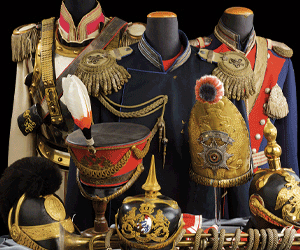Forestry 1938 Pattern Hilfsförster Collar Tabs
SKU: 75.GOR.03.02.02.03.012
Estimated market value:

Estimated market value:
Attributes
History
Like every organisation during the Third Reich, forestry was placed under the control of the NSDAP. The Reichsforstamt (National Forestry Office) was created in 1934 to replace the regional forestry departments that had existed prior to this date. The goals of the Reichsforstamt were to extract economic value in the form of timber from the forests for the German industry, as well as preserve nature and natural monuments for the people as a part of German culture.
A sub-department for professional hunters employed by the government was created. Hunting matters had formerly been a part of the Ministry for Food and Agriculture, but were now placed under the influence of the Reichsforstamt.
Private forestry matters were placed under the care of the Reichsnährstand (National Nutritional Estate) in 1941.
The Reichsforstamt was headed by Luftwaffe leader Hermann Göring as Reichsforstmeister (minister of forestry).
The Reichsbund Deutsche Jägerschaft (National Society of German Hunters) was founded in 1934 as a statutory corporation for non-professional hunters. All existing hunting societies were disbanded and memberships transferred to the Deutsche Jägerschaft. Membership was mandatory for everyone with a hunting license.
Hermann Göring led the organisation as Reichsjägermeister (minister of hunting).
The Reichsforstschutz or Forstschutzkommando (Forestry Protection Service), in 1943 renamed to Forstschutzkorps (Forestry Protection Corps), was a paramilitary force instituted in February of 1940 in the General Government (occupied Poland). Made up of German forestry officials and ethnic Germans from Poland, the Forstschutz was tasked with regular forestry duties, as well as patrolling and protecting woodlands to keep them from being used by the Polish resistance. In 1942, Forstschutz personnel was also stationed in the Eastern European occupied territories where their work was heavily focused on anti-partisan operations.
Very little is known about the Forstschutz organisation today, and all items related to it are exceedingly rare.
The third pattern of Forestry collar tabs was introduced in April of 1938. Compared to the second pattern, the embroidery was no longer attached directly to the collar, but placed on a regular collar tab first. They were now worn on both the formal and the everyday tunic.
The lower ranks (Unterförster down to Forstanwärter) wore green collar tabs that featured metal oak leaves made from aluminum.
Ranks from Landforstmeister down to Förster wore silver-coloured embroidered oak leaves.
Above them, the “Betriebsbeamte” (forestry officials working in the field) wore collar tabs with a silver-coloured oak leaf frame at the bottom and one to three silver-coloured embroidered oak leaves in the centre (arranged vertically).
The “Forstverwaltungsbeamte” (forestry administration officials) wore collar tabs with a complete silver-coloured oak leaf frame around the entire collar tab, as well as one to three silver-coloured embroidered oak leaves in the centre (arranged vertically).
The highest ranks, “Forstdirektoren” (forestry directors), wore collar tabs similar to those of the administration officials, but with gold-coloured embroidery.
The highest ranks also featured gold-coloured piping around their collar tabs, while those of lower rank down to and including Förster featured silver-coloured piping.
Branch colours were introduced. Each Forestry branch was appointed its own collar tab cloth backing colour: State Forestry members used green, Communal Forestry used grey, Private Forestry used brown and Forestry Services of the Army (Heer) and Air Force (Luftwaffe) used black.
Collar tabs were as follows:
The Reichsforstmeister wore a unique set of collar tabs with white backing. The embroidery was gold-coloured and featured a swastika surrounded by an aureole inside a frame of oak leaves.
Generalforstmeister wore a frame of gold-coloured oak leaves with an additional three gold-coloured oak leaves in the centre.
Ministerialdirigenten wore the same collar tabs as the rank above, but with only two oak leaves in the centre.
Oberlandforstmeister wore the same collar tabs as the rank above, but with only one oak leaf in the centre.
Landforstmeister wore a frame of silver-coloured oak leaves with an additional three silver-coloured oak leaves in the centre.
Oberforstmeister wore the same collar tabs as the rank above, but with only two oak leaves in the centre.
Forstmeister and Forstamtmänner wore the same collar tabs as the rank above, but with only one oak leaf in the centre.
Oberförster wore a half-frame of silver-coloured oak leaves around the lower part of the collar tabs, with an additional three silver-coloured oak leaves in the centre.
Revierförster wore the same collar tabs as the rank above, but with only two oak leaves in the centre.
Förster wore the same collar tabs as the rank above, but with only one oak leaf in the centre.
Unterförster wore four silver-coloured oak leaves.
Hilfsförster wore three silver-coloured oak leaves.
Forstaufseher wore two silver-coloured oak leaves.
Forstanwärter wore one silver-coloured oak leaf.


Comments
Sign in to comment and reply.


Scroll Top